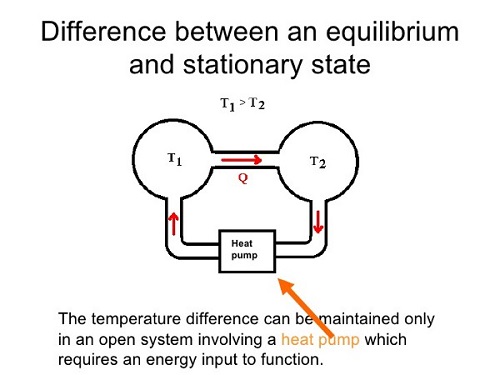|
TRANSLATE THIS ARTICLE
Integral World: Exploring Theories of Everything
An independent forum for a critical discussion of the integral philosophy of Ken Wilber
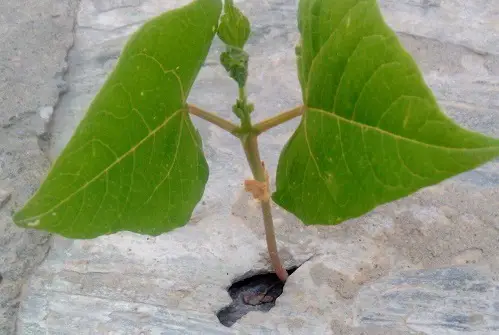 What is life?Natural Religion, Part 3Federico Nicola Pecchini“There is only one fundamental alternative in the universe: existence or non-existence and it pertains to a single class of entities: to living organisms.
Life is different from the rest of the universe: from a thermodynamical perspective, the distinctive feature of us living beings is that we are able to effectively slow down the entropic decline within our bodies and on a planetary level by means of cellular, organic and ecosystem homeostasis.
Prigogine’s proposed principle of stationary state (1945)
We use the available energy in our environment to do self-sustaining work, which keeps us going long enough so that we can reproduce and evolve—but all this seems to go against the universal tendency towards maximum entropy expressed by the 2nd Law. The unique characteristics of living phenomena have been puzzling many famous physicists in the past, from Ludwig Boltzmann to Erwin Schrödinger. For the neurobiologist Terrence Deacon, “life uses the second law against itself.” Just how do we do it? In the groundbreaking work Incomplete Nature (2011), Deacon and his team (which calls itself “The Pirates”) set out to understand how lifelike purpose-driven behavior could actually have emerged from purposeless molecules and their chemical interactions. They discard the panpsychist explanation (everything is purposeful) and the eliminativistic one (nothing is purposeful)—as both fail to explain the key difference between life and non-life. As scientists, they are also not satisfied with any dualistic explanation involving unprovable metaphysical concepts and refuse to seek refuge in mysterianism. Their solution to the mystery of life is simple and elegant. Humanity has long been looking for that extra something that could explain living beings, call it soul, prana, chi or elán vital. But in recent centuries, science has been putting those claims to the test and has repeatedly failed to find any sort of irreducible life-giving substance. Instead, scientists found that life seems to run on ordinary physics and chemistry (only at an incredibly complex level), and have tended therefore to eliminate the soul vocabulary from their dictionary. 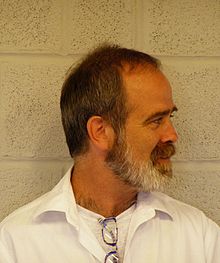 Terrence Deacon Yet maybe—Deacon suggests—we’ve all been looking for the wrong thing. Instead of looking for something added to normal physics and chemistry—he argues—we should be looking for what’s missing. What life does is to constrain the dynamic pathways of available energy and then channel it into useful (self-regenerating, self-protecting and self-reproducing) work. It is precisely the prolongued ‘absence’ or prevention of the otherwise prevalent dynamical tendencies towards entropy maximization that which distinguishes life from the rest of the universe, and which makes life’s evolutionary journey possible. As Lao-Tzu used to say: “Usefulness [comes] from what is not there.” In his recent book Neither Ghost Nor Machine (2017), the “Pirate” Jeremy Sherman explains: “The marvelous things that [living beings] can do result from dynamical possibilities that have been prevented from occurring. There’s nothing about what you do that wasn’t always physically possible. It was just extremely unlikely before. Through emergent constraint, your unlikely mental and physiological capacities have become increasingly likely.”
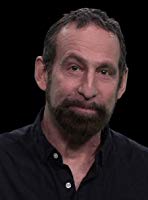 Jeremy Sherman While constraints can also spontaneously emerge from the turbulent interaction of two thermodynamic systems and result in self-organizing phenomena such as stars, whirpools and crystals, these systems are not alive since they are not self-regenerating. They are simply far-from equilibrium dissipative structures which emerge until the energetic gradients are extinguished, so that the whole system can resume its inexorable fall towards thermodynamic equilibrium. Although other researchers have previously claimed that reducing differentials (speeding up energy dissipation) is also just what life does, the authors disagree since while self-organizing constraints emerge to maximize entropy production (they speed up the process of eliminating the same differentials that created it, thus earning the grim label of self-undermining dynamics), living constraints emerge to regenerate, repair and reproduce themselves, thus actively reducing the rate of entropy production at least on a local level. In order to avoid confusion, they drop the term “self-organization” (which seems to involve a self), and call it instead “regularization” or “morphodynamics”. To explain the emergence of selfhood, Deacon and his team imagine a scenario where two morphodynamic systems get synergistically coupled by reciprocally constraining one another. The first is an autocatalytic cycle, the second a self-assemblying capsid produced as a by-product of the cycle itself. They imagine the autocatalytic cycle getting enclosed within the capsid of its own creation, which would effectively halt the catalytic reactions but also likely conserve the catalysts close together, ready to resume the cycle when the capsid breaks open and able to reconstitute the enclosure by producing more self-assemblying molecules as a by-product of the cycle itself.
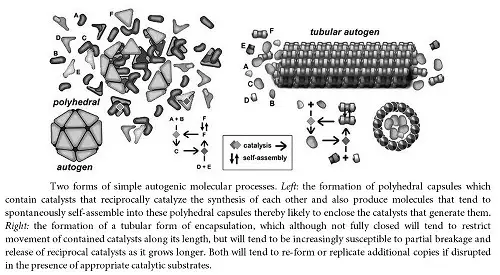
The Autogen hypothesis
The reciprocal constraints emerging from the interaction between these two self-organizing processes result in a higher-level dynamics which Deacon calls Autogenesis—where each process is preventing the demise of the other in such way that the whole process can regenerate itself. The autogen “cycles between two phases, open and closed”. During the closed phase the autogen is inert, while in the open phase autocatalysis resumes and tends to regenerate the enclosure. Just like “a sunflower isn’t the seed phase or the plant phase but the complementary tendency to alternate between the phases”, “an autogen is […] the tendency to close when opened and open when closed”, and therefore the self is the tendency to self-regenerate by means of a synergistically coupled dynamics. This is in line with Immanuel Kant’s three century-old definition of a living organism, whereby: “every part […] is there for the sake of the other (reciprocally as end, and at the same time as means)”. In the autogen case, the synergistic coupling happens to maintain itself, and “this provides the basis for describing its behavior as both means and ends. Its means are the synergistic coupling; its ends are the maintenance of that synergistic coupling.” Deacon concludes that “the synergistic coupling is both the self and the aim.” 
Luigi Ghirri—Kodachrome (1978)
Hence, with the autogen, along with the self emerges a purpose: the purpose of continuation, or “of not ending”. Those that succeed in regenerating and reproducing their own functional constraints keep living. Those that fail, die (natural selection starts here). Although this original purpose emerged purposelessly from a purposeless universe, the autogen’s synergistic coupling can now sustain itself by constraining free energy into work that regenerates those same constraints. The constraint becomes the means whereby the end of maintaining the constraint is achieved. The new class of physical phenomena that emerges this way prevents its own ending, maintains self-similarity over time and can even reproduce itself, thus populating “its environment with evolvable members of its lineage”. Since it’s running against the universal odds (2nd Law), this process is always uncertain and requires a constant effort to prevent its otherwise inevitable degeneration:“Selves try to stay alive—says Sherman—by trying to maintain their ability to keep trying”. Deacon defines living beings as “ententional phenomena”, and the result of their endeavors “teleodynamics”. We can now outline a three-leveled nested hierarchy of emergent dynamics:
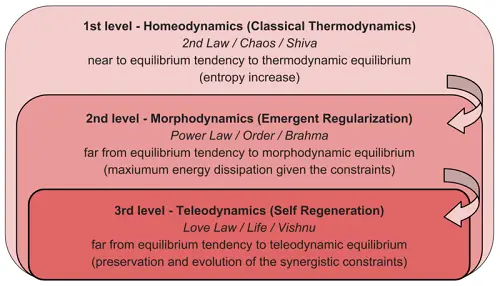
The emergence of order and life from a chaotic universe
|
